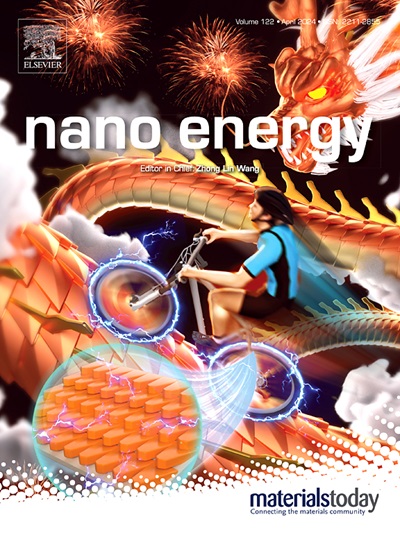Trace crystal water reinforces Mn−N bonds to achieve structurally stable sodium manganese hexacyanoferrates for sodium-ion batteries
IF 17.1
1区 材料科学
Q1 CHEMISTRY, PHYSICAL
引用次数: 0
Abstract
Sodium manganese hexacyanoferrates (MnHCF) featuring high specific capacity and low cost are highly promising cathode materials for sodium-ion batteries (SIBs). However, the structural instability of MnHCF severely limits its practical application in SIBs, while the controversial role of trace crystal water in stabilizing its framework further complicates performance optimization. In this work, the effects of varying crystal water content on the structure and electrochemical performance of MnHCF materials were systematically investigated. The results indicated that rhombohedral MnHCF with trace crystal water (R-MnHCF-W) exhibits superior structural stability compared to monoclinic MnHCF (M-MnHCF) with abundant crystal water and anhydrous MnHCF (R-MnHCF-0). The trace crystal water compensates for structural vacancies and strengthens Mn−N bonds, effectively mitigating Mn3+ dissolution. Specifically, the R-MnHCF-W cathode exhibits excellent electrochemical performances with a remarkable reversible capacity of 157.0 mAh g−1 and maintains 79.6 % capacity retention after 100 cycles at 0.2 C. Notably, R-MnHCF-W would transform into M-MnHCF when exposed to moist air, and they can be reversibly restored to R-MnHCF through heat treatment, almost retaining the pristine electrochemical performance. This study elucidates the stabilizing role of trace crystal water and provides a strategic pathway for optimizing MnHCF cathodes.
微量结晶水增强Mn - N键,以实现钠离子电池结构稳定的六氰高铁锰酸钠
六氰高铁锰酸钠(MnHCF)具有高比容量和低成本的特点,是极具发展前景的钠离子电池正极材料。然而,MnHCF的结构不稳定性严重限制了其在sib中的实际应用,而微量结晶水在稳定其框架中的争议作用进一步使其性能优化复杂化。本文系统研究了不同晶水含量对MnHCF材料结构和电化学性能的影响。结果表明,含微量结晶水的菱形MnHCF (R-MnHCF-W)比含丰富结晶水的单斜形MnHCF (M-MnHCF)和无水MnHCF (R-MnHCF-0)具有更好的结构稳定性。微量结晶水补偿了结构空缺,增强了Mn - N键,有效地减缓了Mn3+的溶解。具体而言,R-MnHCF-W阴极表现出优异的电化学性能,可逆容量为157.0 mAh g-1,在0.2C下循环100次后保持79.6%的容量保持率。值得注意的是,R-MnHCF- w暴露在潮湿空气中会转化为M-MnHCF,经过热处理可以可逆地恢复为R-MnHCF,几乎保持了原始的电化学性能。本研究阐明了微量结晶水的稳定作用,为优化MnHCF阴极提供了策略途径。
本文章由计算机程序翻译,如有差异,请以英文原文为准。
求助全文
约1分钟内获得全文
求助全文
来源期刊

Nano Energy
CHEMISTRY, PHYSICAL-NANOSCIENCE & NANOTECHNOLOGY
CiteScore
30.30
自引率
7.40%
发文量
1207
审稿时长
23 days
期刊介绍:
Nano Energy is a multidisciplinary, rapid-publication forum of original peer-reviewed contributions on the science and engineering of nanomaterials and nanodevices used in all forms of energy harvesting, conversion, storage, utilization and policy. Through its mixture of articles, reviews, communications, research news, and information on key developments, Nano Energy provides a comprehensive coverage of this exciting and dynamic field which joins nanoscience and nanotechnology with energy science. The journal is relevant to all those who are interested in nanomaterials solutions to the energy problem.
Nano Energy publishes original experimental and theoretical research on all aspects of energy-related research which utilizes nanomaterials and nanotechnology. Manuscripts of four types are considered: review articles which inform readers of the latest research and advances in energy science; rapid communications which feature exciting research breakthroughs in the field; full-length articles which report comprehensive research developments; and news and opinions which comment on topical issues or express views on the developments in related fields.
 求助内容:
求助内容: 应助结果提醒方式:
应助结果提醒方式:


